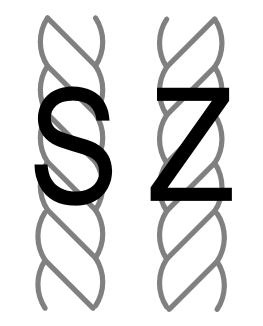External links
- Text.
| | This article related to international law is a stub. You can help Wikipedia by expanding it. |
| C61 | |
|---|---|
| ILO Convention | |
| Date of adoption | June 22, 1937 |
| Date in force | Withdrawn May 30, 2000 |
| Classification | Hours of Work |
| Subject | Working Time |
| Previous | Minimum Age (Non-Industrial Employment) Convention (Revised), 1937 (shelved) |
| Next | Safety Provisions (Building) Convention, 1937 |
Reduction of Hours of Work (Textiles) Convention, 1937 is an International Labour Organization Convention.
It was established in 1937:
Considering that the question of the reduction of hours of work in the textile industry is the second item on the agenda of the Session;
Confirming the principle laid down in the Forty-Hour Week Convention, 1935, including the maintenance of the standard of living;
Considering it to be desirable that this principle should be applied by international agreement to the textile industry;...
The convention was never brought into force, and was withdrawn at the ILO General Conference May 30, 2000.
No countries ratified this convention.
Amalgamated Clothing Workers of America (ACWA) was a United States labor union known for its support for "social unionism" and progressive political causes. Led by Sidney Hillman for its first thirty years, it helped found the Congress of Industrial Organizations. It merged with the Textile Workers Union of America (TWUA) in 1976 to form the Amalgamated Clothing and Textile Workers Union (ACTWU), which merged with the International Ladies' Garment Workers' Union in 1995 to create the Union of Needletrades, Industrial and Textile Employees (UNITE). UNITE merged in 2004 with the Hotel Employees and Restaurant Employees Union (HERE) in 2004 to create a new union known as UNITE HERE. After a bitter internal dispute in 2009, the majority of the UNITE side of the union, along with some of the disgruntled HERE locals left UNITE HERE, and formed a new union named Workers United, led by former UNITE president Bruce Raynor.
This article covers the development of the industry in the Empire of Japan, during the rise of statism in the first part of the Shōwa era.
The eight-hour day movement was a social movement to regulate the length of a working day, preventing excesses and abuses of working time.
Hours of Work (Industry) Convention, 1919 is an International Labour Organization Convention.
Forty-Hour Week Convention, 1935 is an International Labour Organization Convention.
Reduction of Hours of Work Convention, 1935 (shelved) is an International Labour Organization Convention.
Reduction of Hours of Work Convention, 1936 is an International Labour Organization Convention.
Safety Provisions (Building) Convention, 1937 is an International Labour Organization Convention.
The following outline is provided as an overview of and topical guide to the United Nations:

Emil Rieve was an American labor leader. He was president of the Textile Workers Union of America (TWUA) from 1939 to 1956, a vice president of the Congress of Industrial Organizations (CIO) from 1939 to 1955, and a vice president of the AFL-CIO from 1955 to 1960.

The textile and clothing industries provide a single source of growth in Bangladesh's rapidly developing economy. Exports of textiles and garments are the principal source of foreign exchange earnings. By 2002 exports of textiles, clothing, and ready-made garments (RMG) accounted for 77% of Bangladesh's total merchandise exports.

Roller printing, also called cylinder printing or machine printing, on fabrics is a textile printing process patented by Thomas Bell of Scotland in 1783 in an attempt to reduce the cost of the earlier copperplate printing. This method was used in Lancashire fabric mills to produce cotton dress fabrics from the 1790s, most often reproducing small monochrome patterns characterized by striped motifs and tiny dotted patterns called "machine grounds".
C61 may refer to:

ISO 2 is an international standard for direction of twist designation for yarns, complex yarns, slivers, slubbings, rovings, cordage, and related products.

Taylor, Lang & Co. was a textile machinery manufacturer based in Stalybridge, Greater Manchester, England.
The Convention on Offences and Certain Other Acts Committed on Board Aircraft, commonly called the Tokyo Convention, is an international treaty, concluded at Tokyo on 14 September 1963. It entered into force on 4 December 1969, and as of 2022 has been ratified by 187 parties.

The Maritime Labour Convention (MLC) is an International Labour Organization (ILO) convention, number 186, established in 2006 as the fourth pillar of international maritime law and embodies "all up-to-date standards of existing international maritime labour Conventions and Recommendations, as well as the fundamental principles to be found in other international labour Conventions". The other pillars are the SOLAS, STCW and MARPOL. The treaties applies to all ships entering the harbours of parties to the treaty (port states), as well as to all ships flying the flag of state party (flag states, as of 2021: over 91 per cent).

The 1928 New Bedford textile strike was a mass work stoppage of approximately 30,000 machinery operatives in several of the large cotton mills located in New Bedford, Massachusetts, USA. The strike, which ran for several months during the spring and summer of 1928, is remembered for the prominent role played by the Workers (Communist) Party of America in mobilizing the immigrant workers of the region.
The textile industry in China is the largest in the world in both overall production and exports. China exported $274 billion in textiles in 2013, a volume that was nearly seven times that of Bangladesh, the second largest exporter with $40 billion in exports. This accounted for 43.1% of global clothing exports. According to Women's Wear Daily, they account for more than 50 percent of the world's total overall production, exports, and retail. As of 2022, their textile and garment exports total up to around $316 billion and their retail up to $672 billion. China has been ranked as the world's largest manufacturer since 2010.
Reduction of Hours of Work Convention may refer to: